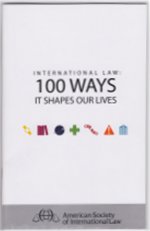
Resolving more
easily and consistently child custody disputes and abduction cases.
By: T’Aria Reynolds, Intern, International Judicial Academy
(In celebration
of the 100th anniversary of the founding of the American Society of
International Law in 2006, the Society published a pamphlet titled International
Law: One Hundred Ways It Shapes Our Lives. The introduction gives an
explanation for its conception: an affirmation that: “international law not
only exists, but also penetrates much more deeply and broadly into everyday
life than the people it affects may generally appreciate.” This column seeks to
elucidate and elaborate on many of the 100 ways briefly presented in the ASIL
pamphlet.)
Family law
encompasses interstate and international child custody cases. Resolving child
custody disputes between parents who reside in different states can be
challenging. Furthermore, resolving a child custody dispute when a parent takes
a child across international borders creates greater challenges. As human
society continues to move towards becoming a global society international child
custody disputes are likely to increase.
Since the 1980’s
The Hague Convention on the Civil Aspects of International Child Abduction
(“Convention”) has been the principle guide for enforcing the return of an
abducted child, sixteen and under, to the child’s “home” country. The
Convention provides for the “immediate return of children who are taken from
their country of “habitual residence” in violation of custody rights.” The
treaty attempts to preserve the custody status quo that existed immediately
before the wrongful removal of a child. However, if a year has passed the
alleged abducting parent can prove the child should not be returned because the
child is now settled in its new environment.

 International
Judicial Monitor
International
Judicial Monitor